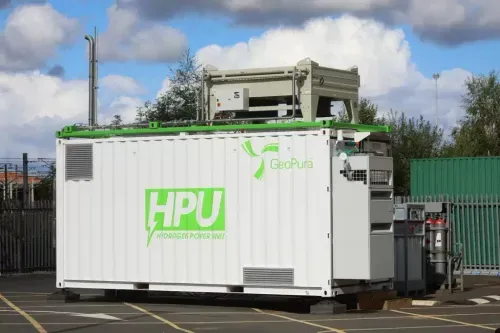[Editor’s note: Paragraphs six through nine have been modified to clarify that Colorado legislation does in fact include ‘three pillars’ language.]
Final guidelines for the federal hydrogen production tax credits are still a work in progress, but in the meantime, legislatures across the country have been mulling their own incentives to spur production.
So far, 14 U.S. states have or are considering legislation that includes tax credits or other incentives for the use or production of hydrogen, five of which specify the hydrogen has to be “green,” “clean” or “zero-carbon.”
The industry is waiting for the final regulations relating to the 45V tax credit for production of clean hydrogen, a draft of which was released last December, and states are similarly waiting to make their own moves.
“States have interest in developing hydrogen programs, but they will lag the federal initiatives,” said Frank Wolak, CEO of the Fuel Cell and Hydrogen Energy Association. “The new suite of things that the states will do is largely dependent upon the reaction from the federal government, which is brand new.”
The ones that aren’t waiting opt for vagueness.
Val Stori, senior program manager at the Great Plains Institute, a non-profit focused on the energy transition, notes that Washington state has a bill supporting renewable electrolytic hydrogen, but it doesn’t specify whether electricity has to be sourced directly from renewables or if it can come from the grid. It doesn’t touch upon the more granular “three pillars” requirements for clean hydrogen which could be included in federal regulations: new supply, temporal matching, and deliverability.
“The lack of specificity is the trend,” she said.
Meanwhile, Colorado’s Advance the Use of Clean Hydrogen Act is the exception to that rule with what’s considered the country’s first clean hydrogen standards, including “matching electrolyzer energy consumption with electricity production on an hourly basis” and requiring that “the electricity used to produce clean hydrogen comes from renewable energy that would otherwise have been curtailed or not delivered to load or from new zero carbon generation.”
The standard will be enforced starting in 2028 or when the deployment of hydrogen electrolyzers in the state exceeds 200 MW.
(Colorado also has a Clean Air Program and a recently launched Colorado Industrial Tax Credit Offering that can offer financial support for industrial emissions reduction projects, including hydrogen projects, but they don’t mention hydrogen use or production specifically.)
“You might see the beginnings of laws that are starting to appear now, but it might take two or three years before states build the momentum to figure out what they should be doing,” said Wolak.
Nine out of the 14 states that have hydrogen-specific legislation don’t target clean hydrogen, but hydrogen in general. Kentucky, for example, has a 2018 tax incentive for companies that engage in alternative fuel production and hydrogen transmission pipelines.
More recently, Oklahoma introduced a bill that proposes a one-time $50m infrastructure assist to a company that invests a minimum of $800m in a hydrogen production facility. According to local news reports, the bill is aimed at Woodside Energy’s electrolytic hydrogen plant in Ardmore.
“We are an oil and gas state and we will be a primarily oil and gas state for a long time,” Oklahoma Senator Jerry Alvord, the bill’s sponsor, said in an interview. “But we could be at the forefront in our area of hydrogen and the uses that hydrogen puts before us.”
Depending on the state, general hydrogen incentives could potentially add to federal tax incentives for clean hydrogen projects.
Meanwhile, other states have been implementing Low Carbon Fuel Standards to encourage the development and use of clean fuels, including hydrogen, in transportation.
Last month, for example, New Mexico enacted its Low Carbon Fuel Standard, a technology-neutral program based where producers and vendors of low-carbon fuels, including clean hydrogen, generate credits to sell in the clean fuels marketplace, where they can be bought by producers of high carbon fuels.
Similar programs exist in Oregon, Washington, and California, which was early to the game and began implementing its program in 2011.






